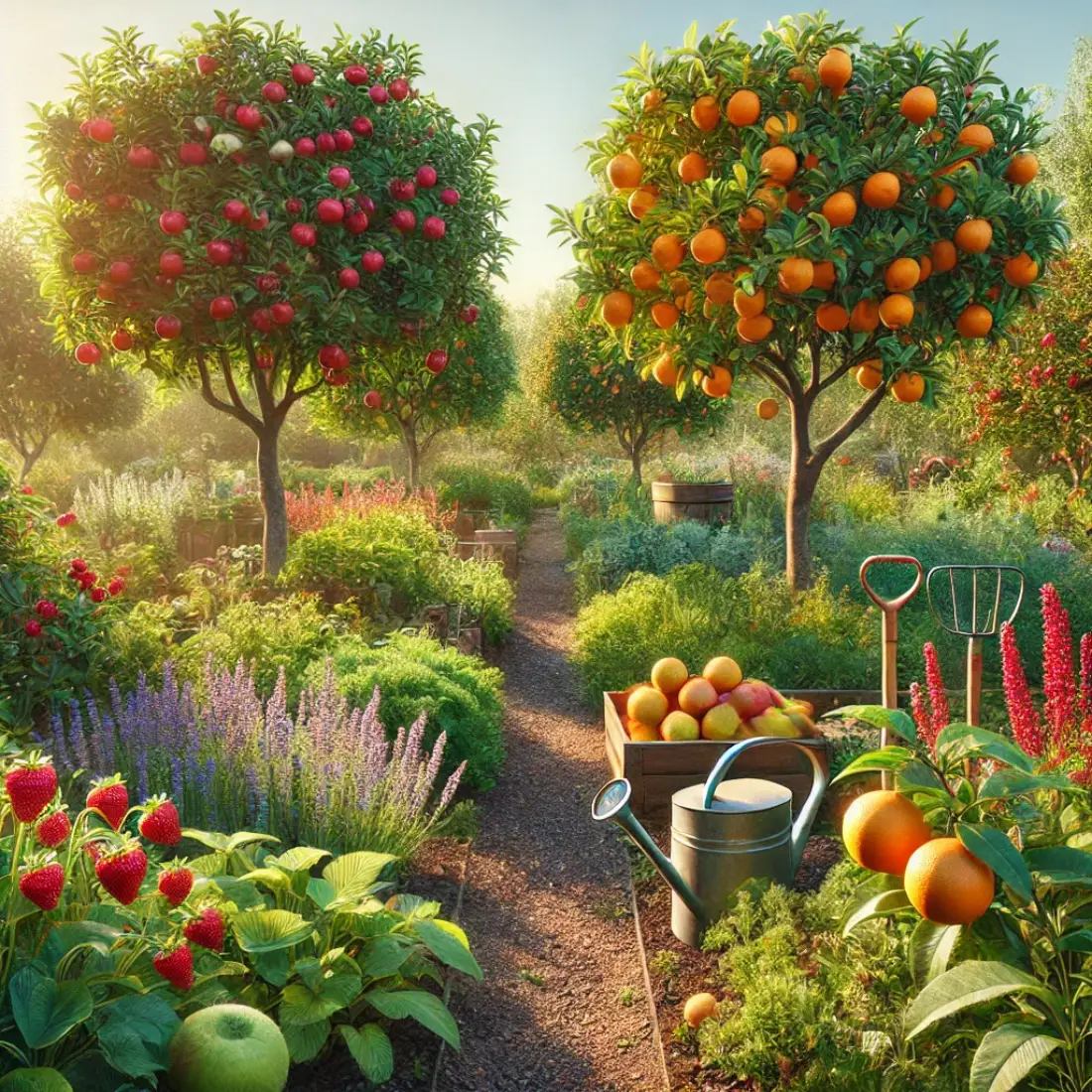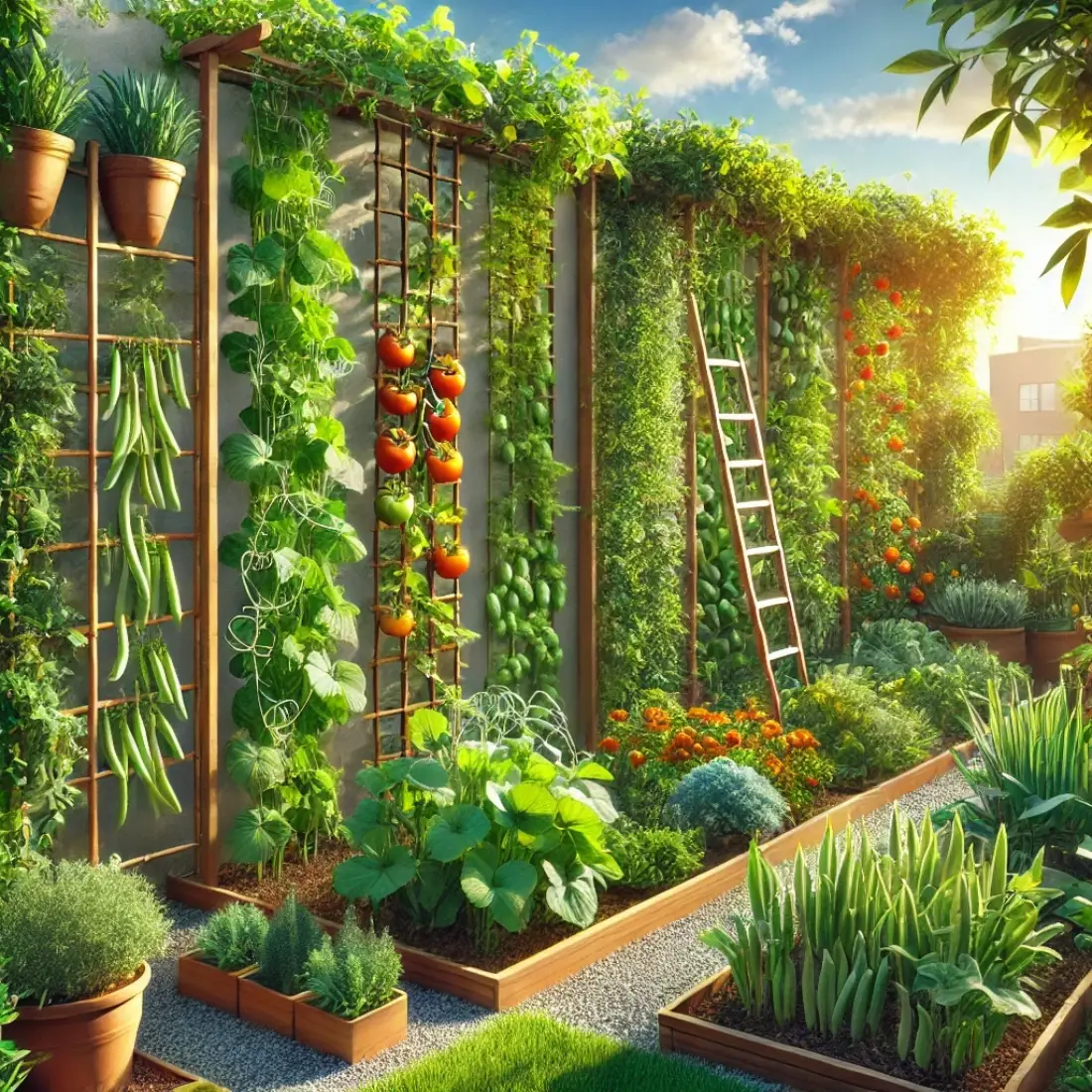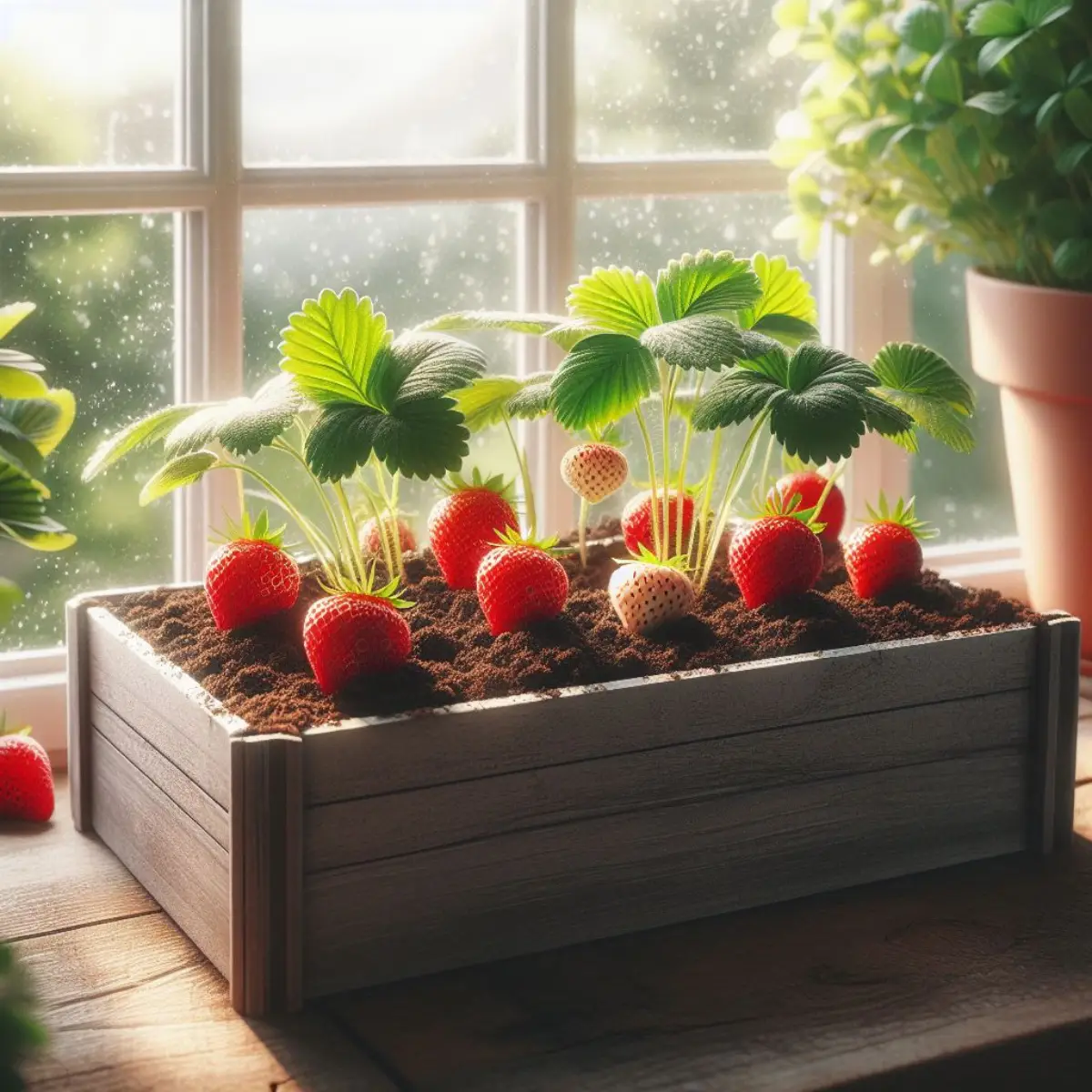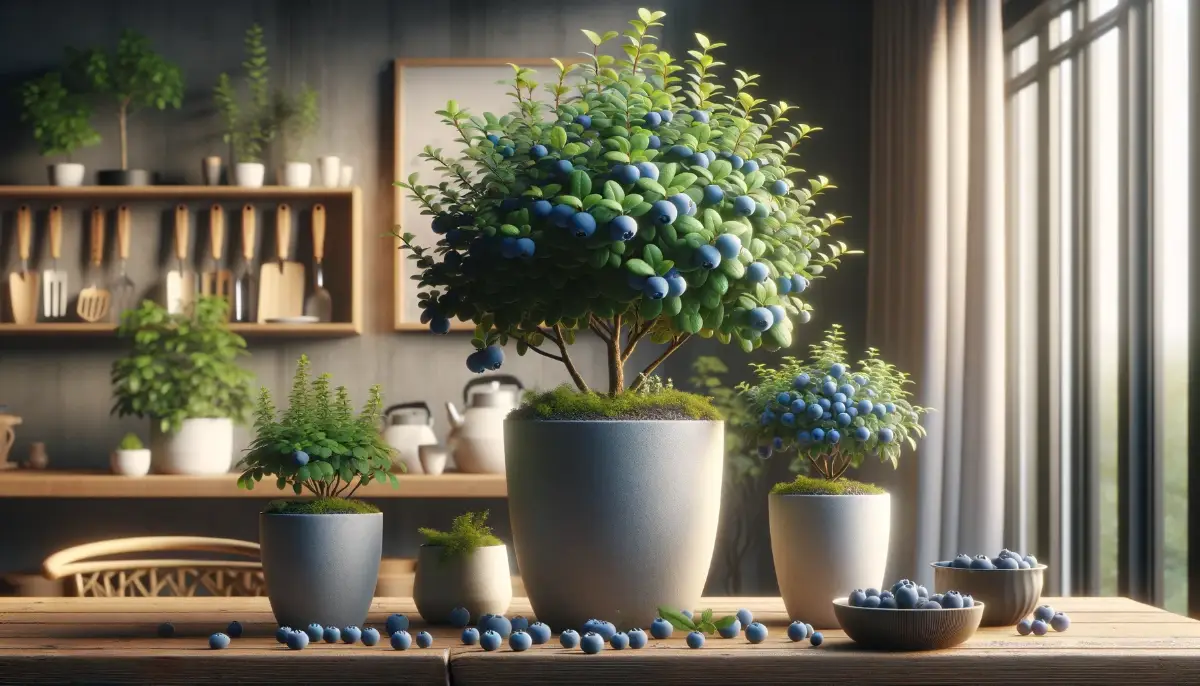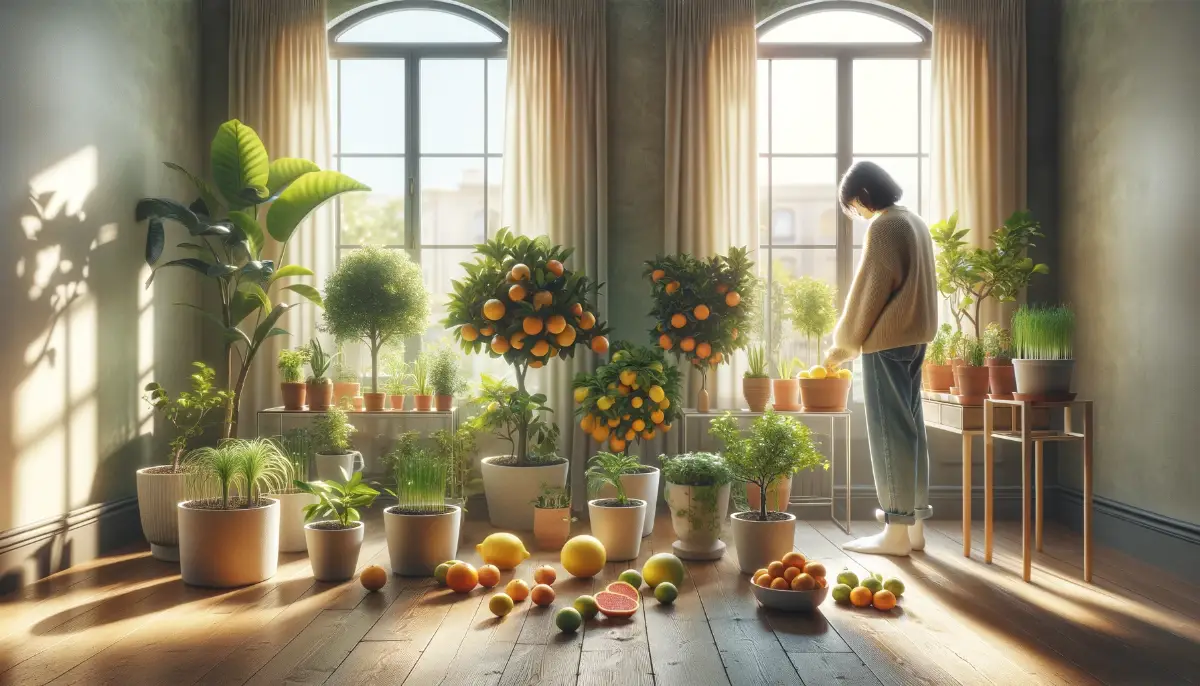Growing fruits at home offers numerous benefits. Health benefits include access to fresh, pesticide-free produce, which is more nutritious and flavorful. Cost savings come from reduced grocery bills as home-grown fruits provide a steady supply over the years. Environmentally, it reduces the carbon footprint associated with transporting store-bought fruits, promoting sustainability.
- Choose the Right Fruits: Select easy-to-grow fruits suitable for your climate and soil conditions.
- Prepare Your Soil: Ensure your garden soil is rich, well-draining, and appropriately amended for fruit plants.
- Plant Properly: Follow guidelines for planting depths, spacing, and positioning to maximize sunlight and growth.
- Water and Fertilize: Regular watering and the use of organic fertilizers help maintain healthy fruit plants.
- Prune and Maintain: Regular pruning encourages growth and fruit production, while pest management ensures healthy plants.
- Harvest Timely: Pick fruits at the peak of ripeness for the best flavor and nutritional value.
- Enjoy the Rewards: Relish the fresh, delicious fruits from your garden, saving money and promoting a sustainable lifestyle.
How to Choose the Right Fruits for Your Garden
Selecting the right fruits for your garden involves considering several key factors to ensure successful growth and a bountiful harvest.
1. Climate and Hardiness Zone: Start by identifying your USDA hardiness zone or the equivalent for your country. This helps determine which fruits will thrive in your local climate. Some fruits, like citrus, require warm climates, while others, like apples, can withstand colder temperatures.
2. Space and Garden Layout: Assess the space available in your garden. Small gardens or container gardens are perfect for compact fruits like strawberries or dwarf fruit trees. Larger spaces can accommodate standard-sized fruit trees and sprawling plants like raspberries or blackberries.
3. Soil Type and Quality: Test your soil to understand its composition, pH level, and nutrient content. Most fruits prefer well-draining soil rich in organic matter. Amend your soil as needed to match the preferences of the fruits you wish to plant.
4. Sunlight Exposure: Ensure your garden site receives adequate sunlight, as most fruiting plants need full sun (at least 6-8 hours of direct sunlight daily). Choose fruits that match the sunlight availability of your garden.
5. Maintenance and Care: Consider the level of care and maintenance you can provide. Some fruits, like blueberries and grapes, require more attention in terms of pruning, fertilizing, and pest management, while others, like blackberries, are more low-maintenance.
6. Pollination Needs: Check if the fruits you choose require cross-pollination. Some fruit trees, like apples and pears, need a second variety nearby to produce fruit, while others are self-pollinating.
7. Personal Preferences: Finally, choose fruits that you and your family enjoy eating. Growing fruits you love will make the gardening experience more rewarding.
10 Easy Fruits to Grow at Home
Strawberries
Strawberries are one of the easiest and most rewarding fruits to grow in a home garden. They are perfect for beginners due to their low maintenance requirements and adaptability to various growing conditions. Strawberries thrive in well-drained soil rich in organic matter and require full sun for at least six hours a day.
Plant strawberry runners or crowns in early spring, spacing them about 12-18 inches apart. Water them regularly, ensuring the soil remains consistently moist but not waterlogged. Mulching around the plants helps retain moisture and suppress weeds.
Strawberries can be grown in garden beds, containers, or hanging baskets, making them ideal for small spaces. They produce fruit quickly, often within the first season, and continue to yield for several years with proper care. Regularly remove any dead leaves and runners to encourage healthy growth and abundant fruit production.
Blueberries
Blueberries are a nutritious and delicious addition to any home garden, known for their high antioxidant content and vibrant flavor. They thrive in acidic, well-drained soil with a pH between 4.5 and 5.5. Before planting, amend your soil with peat moss or sulfur to achieve the desired acidity.
Blueberries require full sun, at least six to eight hours a day, to produce the best fruit. Plant them in early spring or fall, spacing bushes about 4-6 feet apart to allow for adequate growth and air circulation. Water regularly, keeping the soil consistently moist but not soggy.
Mulching with pine needles or wood chips helps maintain soil acidity and moisture. Blueberries benefit from annual pruning to remove dead or weak branches and encourage new growth. They also require cross-pollination, so plant at least two different varieties to ensure a good harvest.
Raspberries
Raspberries are a versatile and easy-to-grow fruit, perfect for home gardens. They thrive in well-drained, slightly acidic soil with a pH between 5.5 and 6.5. Plant them in a sunny spot where they can receive at least six hours of direct sunlight daily.
Raspberry canes should be planted in early spring, spaced about 2-3 feet apart, with rows about 6 feet apart. This spacing allows for proper air circulation and easy harvesting. Water regularly to keep the soil moist but avoid waterlogging, as raspberries are prone to root rot.
Raspberries come in two main types: summer-bearing and everbearing. Summer-bearing varieties produce one large crop in early summer, while everbearing types yield two smaller crops, one in summer and another in fall. Regular pruning is essential to remove old canes and promote new growth, ensuring a healthy and productive plant.
Blackberries
Blackberries are a low-maintenance and hardy fruit, making them an excellent choice for home gardens. They thrive in well-drained, slightly acidic soil with a pH between 5.5 and 6.5. Plant blackberries in a sunny location where they can receive at least six hours of direct sunlight each day.
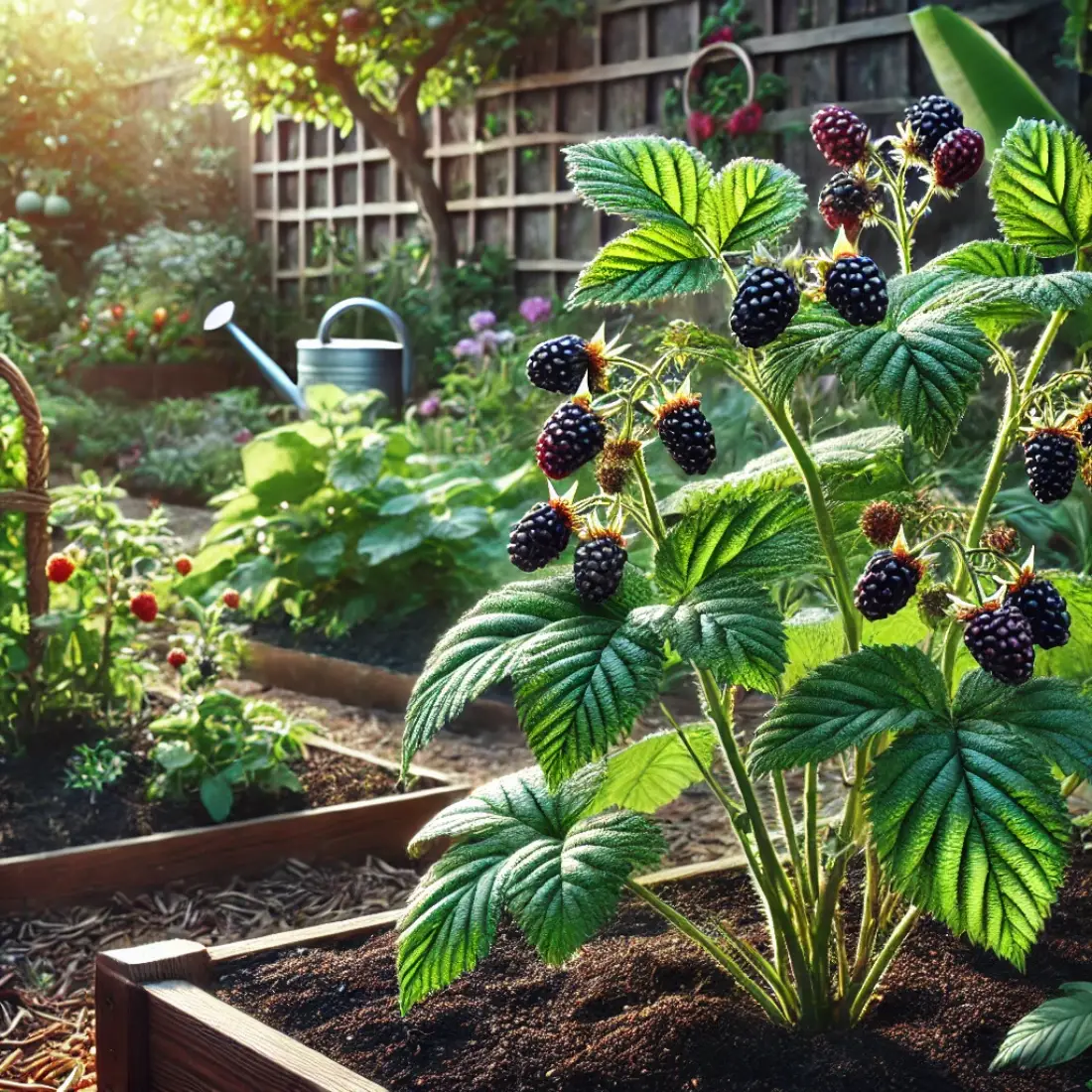
Plant blackberry canes in early spring, spacing them about 3-4 feet apart, with rows 6-8 feet apart. This spacing ensures proper air circulation and room for growth. Water the plants regularly to keep the soil consistently moist but not waterlogged.
Blackberries produce fruit on second-year canes, so regular pruning is necessary. After harvesting, remove the old canes that have fruited and leave the new canes for next year’s crop. Mulching around the plants helps retain soil moisture and suppress weeds.
Apples
Apples are a popular and rewarding fruit to grow in a home garden, offering a wide variety of flavors and uses. They thrive in well-drained soil with a pH between 6.0 and 7.0 and require full sun for at least six hours a day.
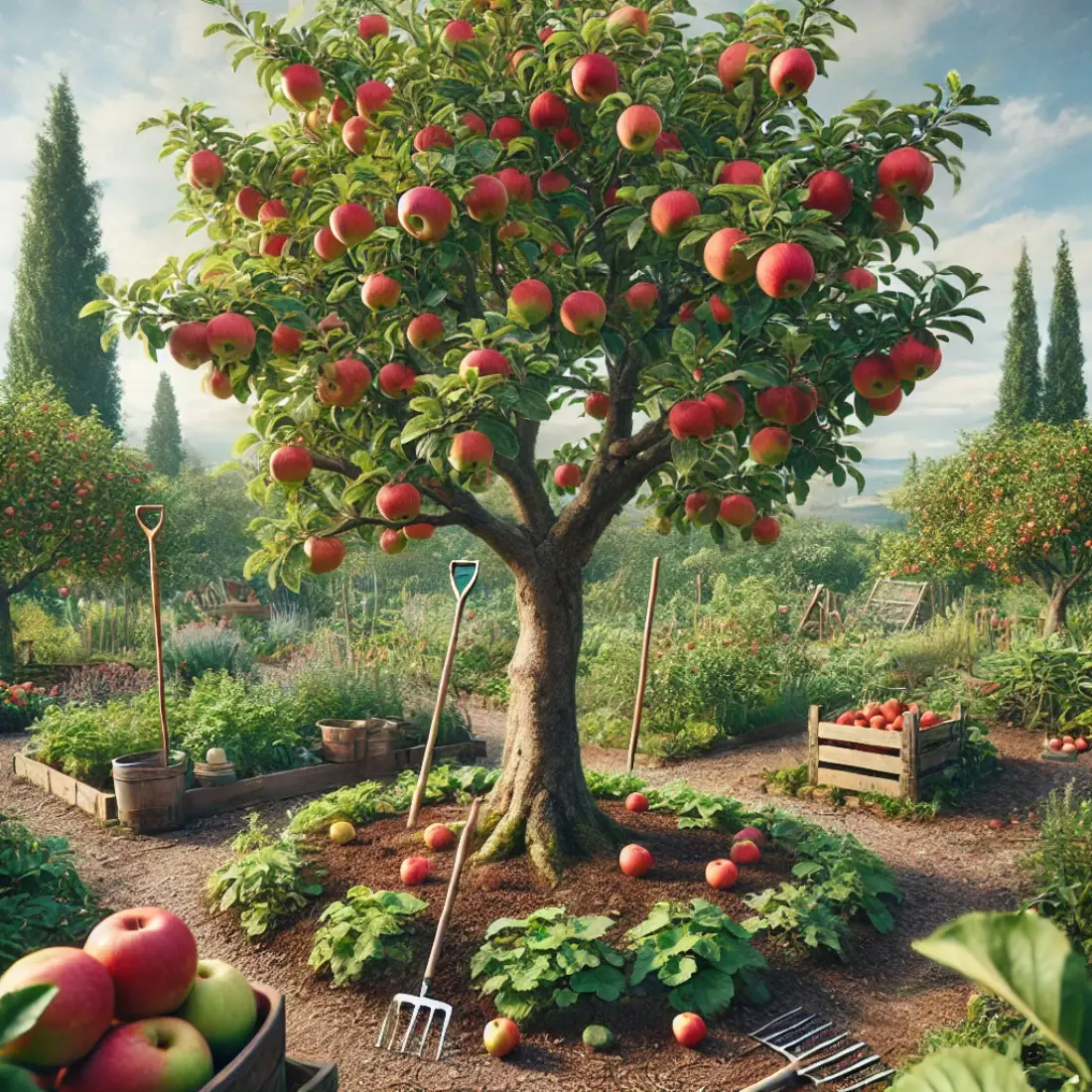
To start, choose apple varieties suitable for your climate. Some varieties are better suited to colder regions, while others thrive in warmer areas. Consider disease-resistant varieties to minimize maintenance. Plant apple trees in early spring or fall, spacing standard trees about 15-20 feet apart, while dwarf varieties can be spaced closer, around 10 feet apart.
Apple trees need cross-pollination to bear fruit, so plant at least two different varieties nearby or ensure there are other apple trees in the vicinity. Water the trees regularly, especially in the first few years, to establish a strong root system. Mulching helps retain soil moisture and suppress weeds.
Pruning is essential for apple trees, encouraging healthy growth and fruit production. Remove any dead or diseased branches and thin out overcrowded areas to allow sunlight to penetrate the canopy. Thinning the fruit when they are about the size of a marble helps improve the size and quality of the remaining apples.
Pears
Pears are an excellent addition to any home garden, known for their sweet flavor and versatility in both fresh eating and cooking. They thrive in well-drained soil with a pH between 6.0 and 7.0 and require full sun, at least six hours a day, to produce the best fruit.
Select pear varieties suited to your climate; some are more tolerant of cold, while others prefer warmer regions. Consider planting disease-resistant varieties to reduce maintenance efforts. Plant pear trees in early spring or fall, spacing standard trees about 20 feet apart and dwarf varieties about 12 feet apart.
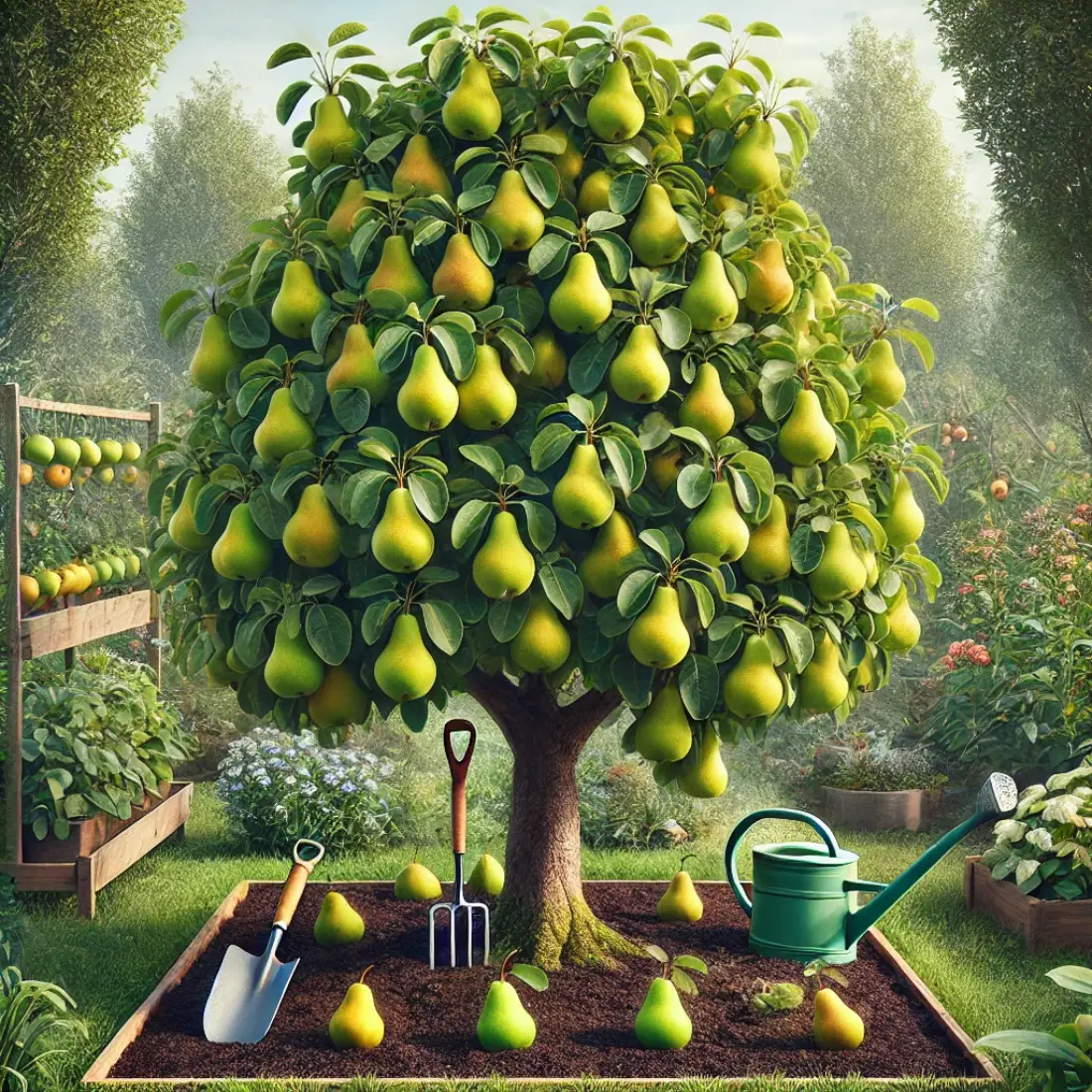
Pears typically need cross-pollination, so planting at least two different varieties close together ensures a good fruit set. Regular watering is crucial, especially during the first few years as the trees establish their root systems. Mulching around the base helps retain moisture and suppress weeds.
Pruning pear trees is essential for promoting healthy growth and fruit production. Remove any dead, damaged, or diseased branches, and thin out the canopy to allow sunlight and air to penetrate. This helps prevent fungal diseases and encourages larger, healthier fruits.
Thin the fruit when they are about the size of a marble to improve the size and quality of the remaining pears. Harvest pears when they are mature but still firm, and allow them to ripen indoors for the best flavor and texture.
Cherries
Cherries are a delightful fruit to grow in a home garden, offering sweet or tart varieties perfect for fresh eating, baking, and preserving. They thrive in well-drained soil with a pH between 6.0 and 7.0 and need full sun, at least six hours a day, for optimal fruit production.
Plant cherry trees in early spring or fall, spacing them about 20 feet apart for standard trees and 10-15 feet for dwarf varieties. Regular watering, especially during dry periods, helps establish strong roots and promotes healthy growth.
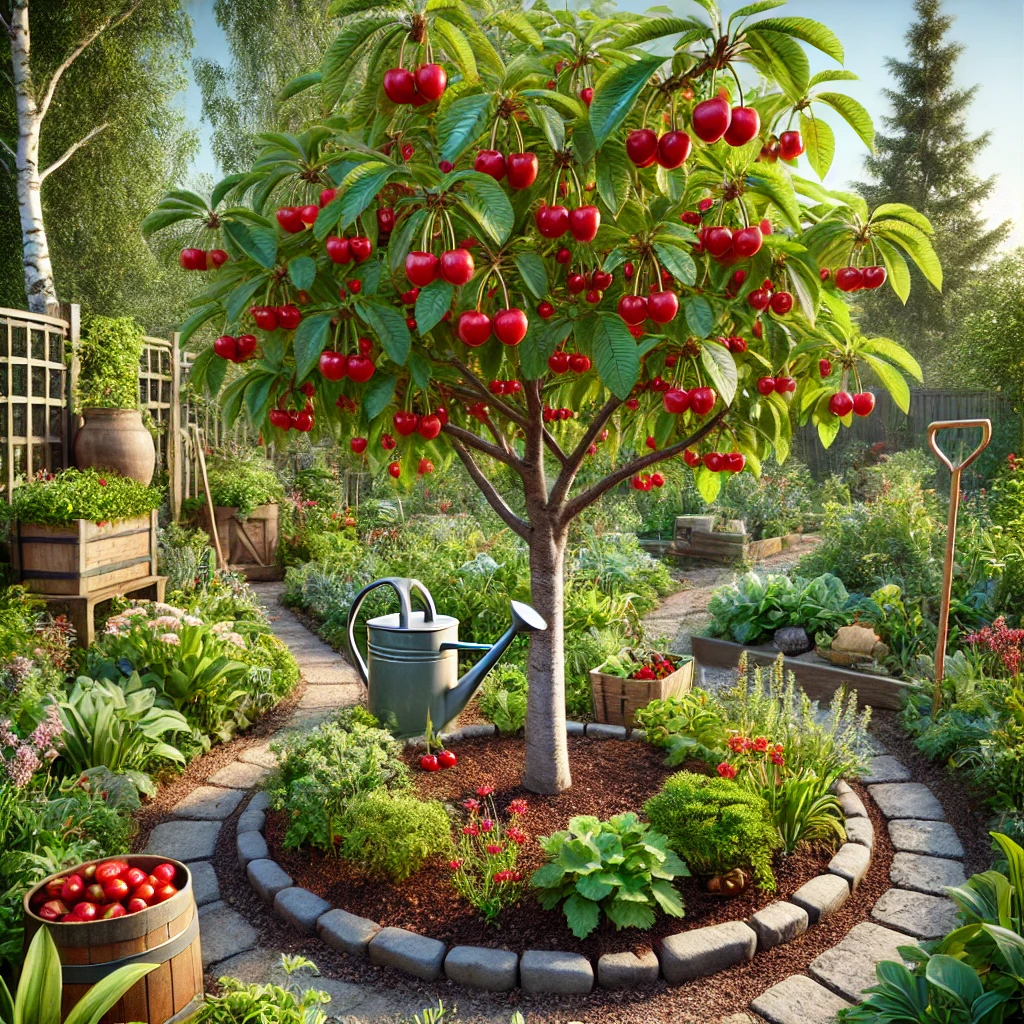
Cherries often require cross-pollination, so plant at least two compatible varieties close together or ensure other cherry trees are nearby. Mulching around the base of the trees helps retain soil moisture and reduce weeds.
Pruning is essential to maintain tree health and encourage fruit production. Remove dead or diseased branches and thin out the canopy to allow sunlight and air to penetrate. With proper care, cherry trees can provide a bountiful harvest of delicious cherries each year.
Plums
Plums are an excellent fruit for home gardens, offering a range of sweet and tart varieties perfect for fresh eating, cooking, and preserving. They thrive in well-drained soil with a pH between 5.5 and 6.5 and require full sun, at least six hours a day, to produce the best fruit.
Plant plum trees in early spring or fall, spacing them about 20 feet apart for standard trees and 10-15 feet for dwarf varieties. Regular watering, especially during dry periods, is essential for establishing strong roots and promoting healthy growth.
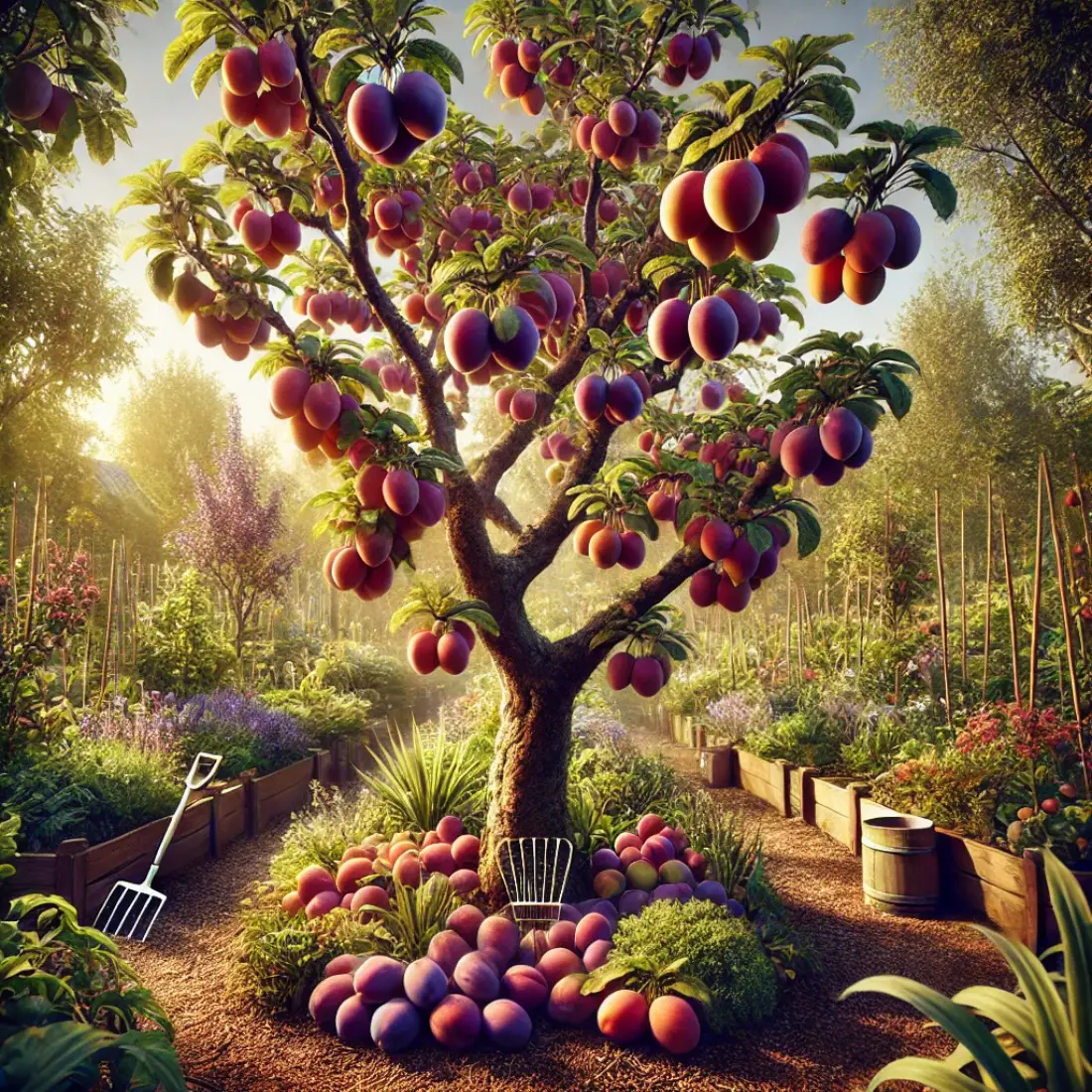
Many plums require cross-pollination, so plant at least two different varieties or ensure other plum trees are nearby. Mulching around the base of the trees helps retain soil moisture and reduce weeds.
Pruning is crucial for maintaining tree health and encouraging fruit production. Remove dead, diseased, or crowded branches to allow sunlight and air to penetrate the canopy.
Grapes
Grapes are a versatile and rewarding fruit to grow in a home garden, suitable for fresh eating, making jams, and even wine production. They thrive in well-drained soil with a pH between 5.5 and 6.5 and require full sun, at least six to eight hours a day, for optimal growth and fruit production.
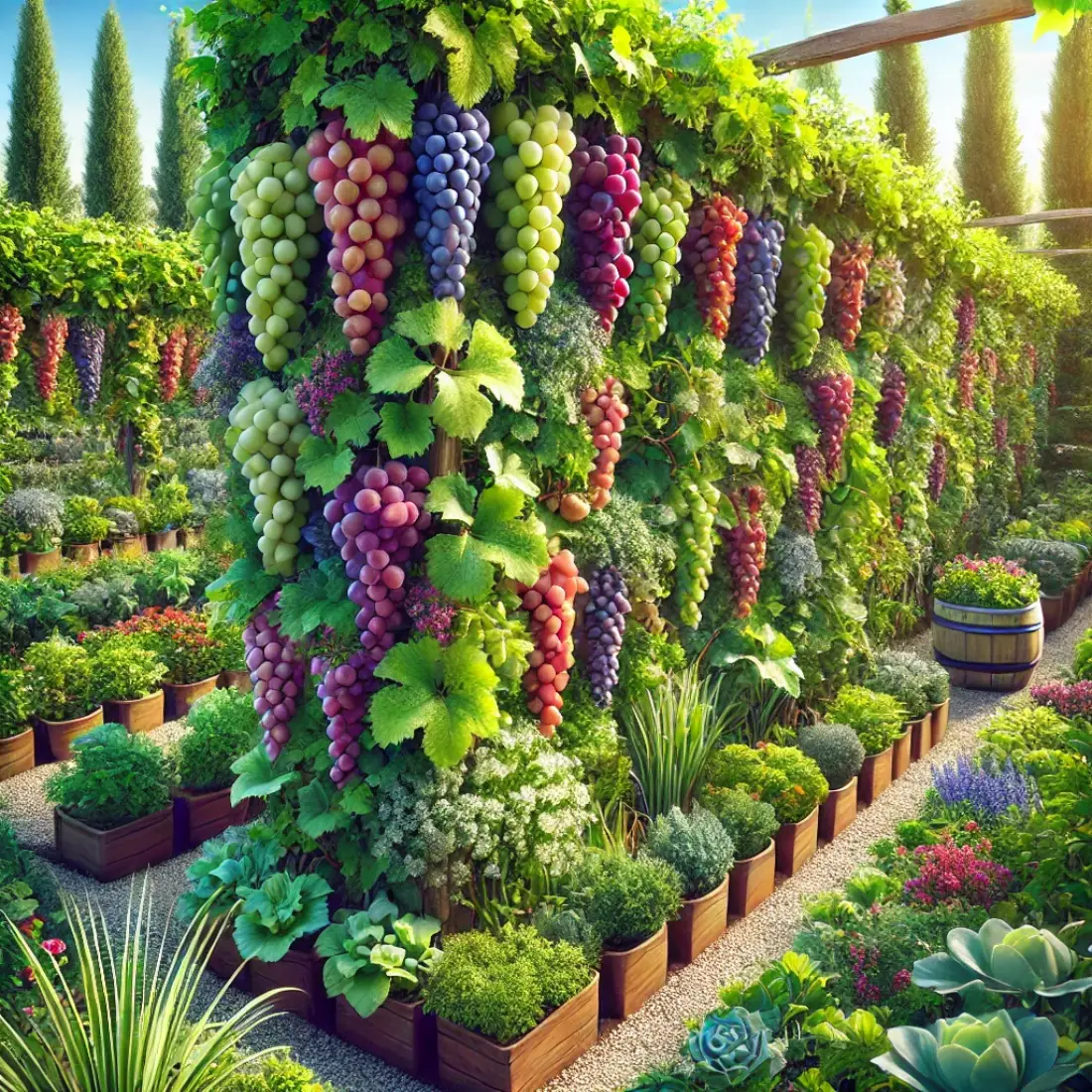
Plant grapevines in early spring, spacing them about 6-10 feet apart to allow ample room for growth and air circulation. Regular watering, especially during the first few years, helps establish a strong root system. Mulching around the base of the vines retains soil moisture and suppresses weeds.
Support the grapevines with trellises or arbors to encourage upward growth and facilitate harvesting. Pruning is essential to maintain vine health and promote fruit production, removing old wood and thinning out excessive growth to allow sunlight and air to reach the developing grapes.
Citrus Fruits
Citrus fruits, such as lemons, oranges, and limes, are rewarding and relatively easy to grow in home gardens, especially in warmer climates. They thrive in well-drained, slightly acidic soil with a pH between 5.5 and 6.5 and require full sun, at least six to eight hours a day, for optimal growth and fruit production.
Plant citrus trees in spring, spacing them about 15-20 feet apart for standard trees and 8-10 feet for dwarf varieties. Regular watering is essential, especially during dry periods, to maintain consistent soil moisture. Mulching around the base of the trees helps retain moisture and suppress weeds.
Citrus trees benefit from regular feeding with a balanced fertilizer high in nitrogen to promote healthy growth and abundant fruiting. Pruning is generally minimal, focusing on removing dead or diseased branches and shaping the tree as needed.
Protecting citrus trees from frost and cold temperatures is crucial. In colder regions, growing citrus in containers that can be moved indoors during winter is an effective strategy.
FAQs about Growing Fruits
What are the easiest fruits to grow for beginners?
The easiest fruits to grow for beginners include strawberries, blueberries, raspberries, blackberries, apples, pears, cherries, plums, grapes, and citrus fruits. These fruits are relatively low-maintenance and adapt well to various growing conditions.
How much sunlight do fruit plants need?
Most fruit plants require full sun, which means at least six to eight hours of direct sunlight daily. Adequate sunlight is essential for healthy growth and fruit production.
Can I grow fruit plants in containers?
Yes, many fruit plants can be grown in containers, including strawberries, blueberries, dwarf apple and pear trees, citrus fruits, and some varieties of grapes. Ensure the containers have good drainage and are large enough to accommodate the plants’ root systems.
How often should I water my fruit plants?
Fruit plants generally need regular watering to keep the soil consistently moist but not waterlogged. The frequency depends on the climate and soil type, but a general rule is to water deeply once or twice a week, more often during hot, dry periods.
Do fruit plants need fertilizer?
Yes, most fruit plants benefit from regular feeding with a balanced organic fertilizer. Options like compost or manure are effective. The type and frequency of fertilizer application depend on the specific fruit and soil conditions.
How do I protect my fruit plants from pests and diseases?
To protect your fruit plants from pests and diseases, practice good garden hygiene, such as removing fallen leaves and debris. Use organic pest control methods, such as neem oil or insecticidal soap, and consider planting disease-resistant varieties.
What is cross-pollination, and why is it important?
Cross-pollination is the transfer of pollen from the flower of one plant to the flower of another plant of the same species. It is essential for fruit production in many fruit trees, such as apples, pears, and cherries. Planting multiple varieties close together ensures successful pollination and fruit set.
When is the best time to plant fruit trees and bushes?
The best time to plant fruit trees and bushes is in early spring or fall. Planting during these seasons allows the plants to establish their root systems before the stress of summer heat or winter cold.
How do I prune fruit plants?
Pruning fruit plants involves removing dead, diseased, or overcrowded branches to promote healthy growth and improve air circulation. The specifics of pruning vary by fruit type, but it generally involves cutting back to a healthy bud or branch.
How long does it take for fruit plants to start producing fruit?
The time it takes for fruit plants to produce fruit varies by type. Some, like strawberries and raspberries, can produce fruit in the first year, while others, like apples and pears, may take 2-4 years or longer to begin bearing fruit. Proper care and maintenance can help ensure a timely and abundant harvest.

